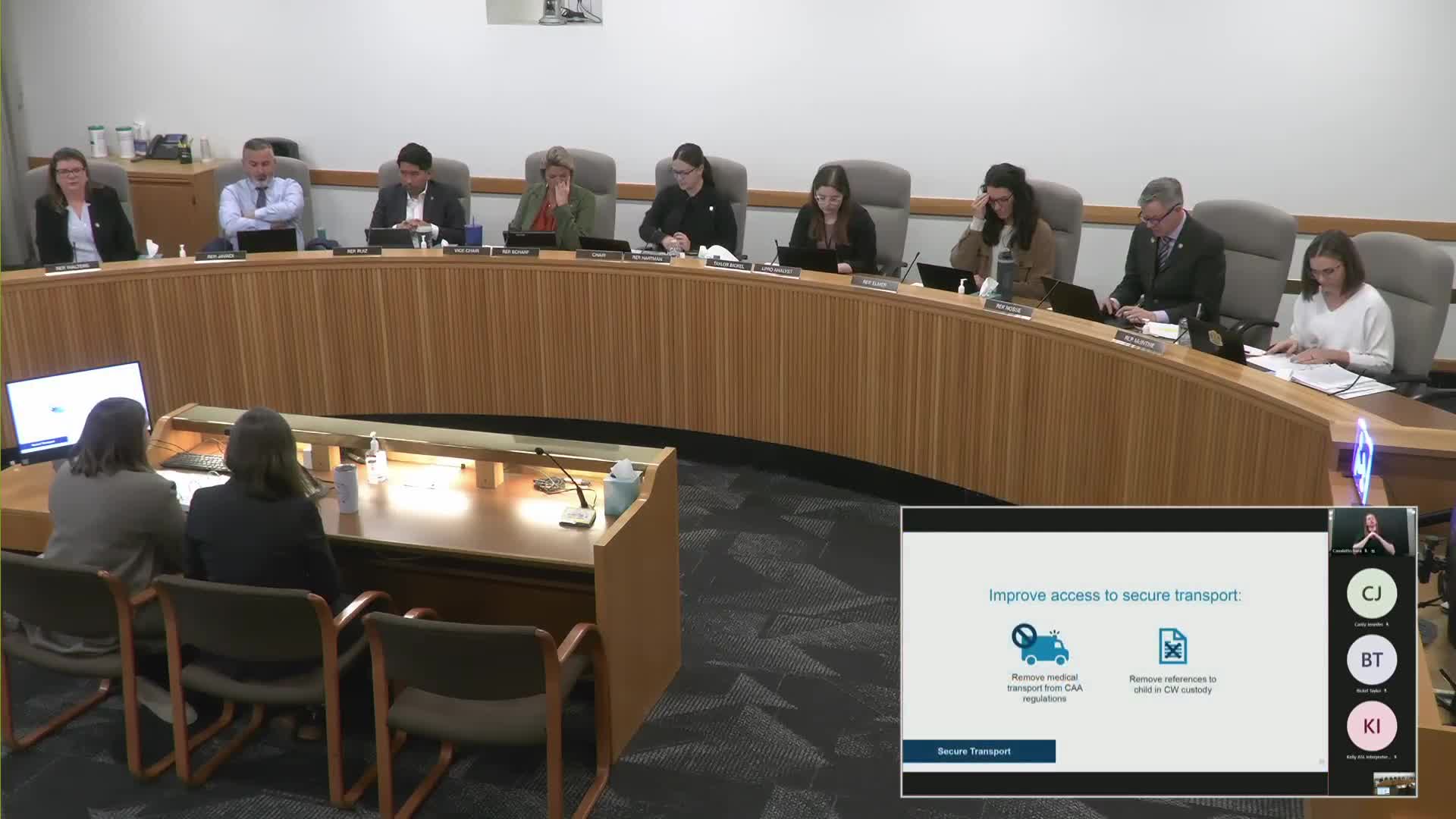Oregon House Bill 3835 enhances secure transport and treatment access for foster children
March 11, 2025 | Early Childhood and Human Services, House of Representatives, Committees, Legislative, Oregon
This article was created by AI summarizing key points discussed. AI makes mistakes, so for full details and context, please refer to the video of the full meeting. Please report any errors so we can fix them. Report an error »

The House Committee on Early Childhood and Human Services convened on March 11, 2025, to discuss House Bill 3835, which aims to enhance access to secure transport services and treatment options for children in Oregon, particularly those in foster care.
The bill proposes significant changes to improve the clarity and functionality of medical transportation services. It removes medical transportation providers from child care and agency regulations governed by the Department of Human Services. This adjustment is intended to reduce confusion between medical and non-medical transport providers, allowing medical transport services to operate more effectively for children in need.
Additionally, House Bill 3835 addresses the barriers that foster children face in accessing necessary care. Currently, these children often have fewer treatment options compared to their peers covered by the Oregon Health Plan or private insurance. The bill introduces narrow exceptions to existing regulations, allowing for more flexibility in treatment placements. For instance, older youth may be placed in adult settings for medically necessary treatment, such as substance use disorder programs, when appropriate.
The bill also proposes exceptions for out-of-state placements, particularly for children in rural areas seeking treatment in neighboring states or those already placed out of state with relatives. These exceptions aim to align Oregon's statutes with federal laws regarding tribal sovereignty and ensure that children receive timely and appropriate care without unnecessary barriers.
To maintain oversight, the bill stipulates that the director of child welfare must personally approve each out-of-state placement exception, ensuring that decisions are made with careful consideration rather than as a means to manage high caseloads.
Overall, House Bill 3835 seeks to modernize and improve the support systems for vulnerable children in Oregon, ensuring they have better access to necessary services and treatment options. The committee's discussions highlighted the importance of these changes in addressing the unique challenges faced by children in foster care.
The bill proposes significant changes to improve the clarity and functionality of medical transportation services. It removes medical transportation providers from child care and agency regulations governed by the Department of Human Services. This adjustment is intended to reduce confusion between medical and non-medical transport providers, allowing medical transport services to operate more effectively for children in need.
Additionally, House Bill 3835 addresses the barriers that foster children face in accessing necessary care. Currently, these children often have fewer treatment options compared to their peers covered by the Oregon Health Plan or private insurance. The bill introduces narrow exceptions to existing regulations, allowing for more flexibility in treatment placements. For instance, older youth may be placed in adult settings for medically necessary treatment, such as substance use disorder programs, when appropriate.
The bill also proposes exceptions for out-of-state placements, particularly for children in rural areas seeking treatment in neighboring states or those already placed out of state with relatives. These exceptions aim to align Oregon's statutes with federal laws regarding tribal sovereignty and ensure that children receive timely and appropriate care without unnecessary barriers.
To maintain oversight, the bill stipulates that the director of child welfare must personally approve each out-of-state placement exception, ensuring that decisions are made with careful consideration rather than as a means to manage high caseloads.
Overall, House Bill 3835 seeks to modernize and improve the support systems for vulnerable children in Oregon, ensuring they have better access to necessary services and treatment options. The committee's discussions highlighted the importance of these changes in addressing the unique challenges faced by children in foster care.
View full meeting
This article is based on a recent meeting—watch the full video and explore the complete transcript for deeper insights into the discussion.
View full meeting
